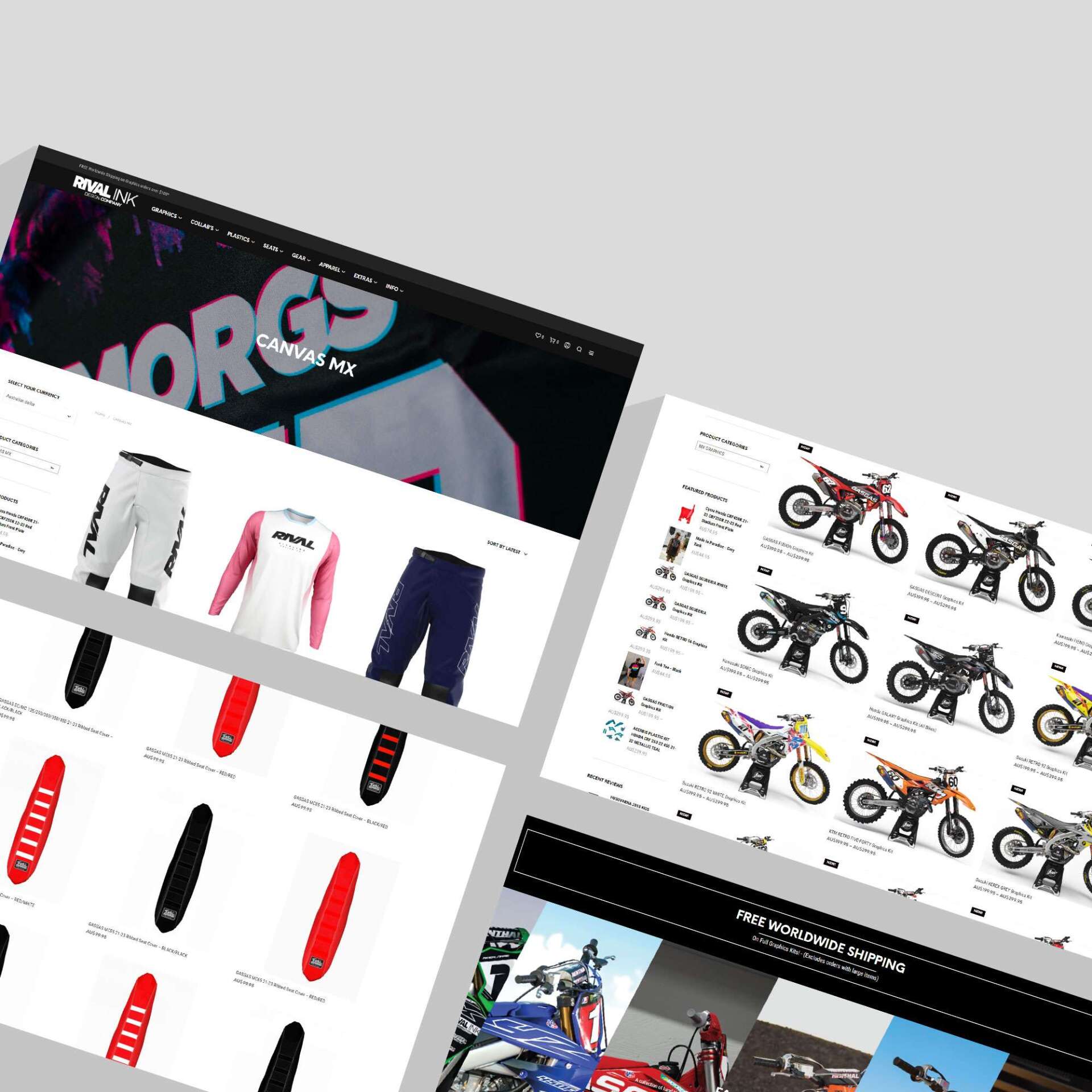Social Success: A Small Business Guide to Online Promotion

Why Social Media is Essential for Small Business Growth
Promoting small business on social media has become a fundamental requirement for success in today's digital marketplace. Here's your quick roadmap to getting started:
Essential Steps for Social Media Success:
- Set clear goals - Brand awareness, lead generation, or sales conversion
- Know your audience - Research demographics and platform preferences
- Choose the right platforms - Focus on 2-3 channels where your customers are active
- Create valuable content - Follow the 80/20 rule (80% value, 20% promotion)
- Engage consistently - Respond to comments and build genuine relationships
- Track and optimise - Monitor key metrics and adjust your strategy accordingly
The statistics tell a compelling story: over 5.24 billion people around the world use social media, with 93% of marketers worldwide leveraging these platforms for business growth. For small businesses, this represents an unprecedented opportunity to compete on a level playing field with larger competitors. Social media offers what traditional advertising never could - the ability to build genuine relationships with customers whilst achieving remarkable cost-effectiveness, with businesses seeing an average return of $2.80 for every dollar spent.
What makes social media particularly powerful for small businesses is its capacity to showcase personality and authenticity in ways that larger corporations often struggle to match. When 67% of social media users have made purchases directly through social platforms, and 49% of internet users are likely to buy from brands they see advertised on social media, the potential for growth becomes undeniable.
The landscape extends far beyond simple posting and hoping for engagement. Modern social media marketing requires strategic thinking, understanding platform algorithms, creating content that resonates with your specific audience, and leveraging both organic and paid promotional tactics. Whether you're a local café in Brisbane looking to attract neighbourhood customers or a tech startup aiming to scale internationally, social media provides the tools to reach your ideal audience with precision and authenticity.
I'm Kerry Anderson, and over my 15 years in digital marketing, I've witnessed how promoting small business on social media can transform companies from local operations into thriving enterprises with global reach. From scaling businesses from $1 million to over $200 million in revenue, I've seen social media serve as both a catalyst for growth and a cornerstone of sustainable customer relationships that drive long-term success.

Building Your Blueprint: How to Create a Winning Social Media Strategy
For small businesses, social media transcends mere casual posting; it serves as a strategic cornerstone integrated into your comprehensive long-term business vision. A successful social media strategy functions as a carefully crafted blueprint, guiding your online endeavours to ensure every post and interaction directly contributes to your overarching business objectives. It necessitates a proactive, strategic approach, rather than a reactive one.
Many small businesses, driven by initial enthusiasm, may inadvertently spread their efforts too thinly across numerous platforms, post inconsistently, or focus predominantly on overt promotional content. This often results in diminished returns and resource exhaustion. The key lies in cultivating a precise understanding of your business goals, identifying your target audience, and selecting the platforms that optimally serve both. As experts in digital marketing, we recognise that effective engagement on social media cultivates a strong brand reputation, and consistent, well-planned investment yields substantial long-term dividends. We have observed how even organically developed social media marketing ideas, refined over time, can prove exceptionally effective in promoting small business on social media .
To truly harness the power of social media, a well-defined strategy is indispensable. This encompasses setting clear, measurable goals, accurately identifying your target audience, selecting the most appropriate platforms, and conducting thorough competitive analysis. For a comprehensive guide on establishing your social media presence, our article on How to Create an Effective Social Media Strategy offers invaluable insights and actionable steps.
Step 1: Define Your Business Goals and Budget
Before commencing any social media activity, it is crucial to articulate your desired outcomes. Your social media initiatives must directly align with your broader business objectives. This necessitates setting SMART goals —goals that are S pecific, M easurable, A chievable, R elevant, and T ime-bound.
Consider these primary social media goals commonly pursued by small businesses:
- Brand Awareness: This objective focuses on increasing your brand's visibility and fostering recognition among a wider audience. Social media excels in this regard, enabling the dissemination of information about your business to a vast network. While organic reach contributes, targeted paid social advertisements can significantly amplify your message to new demographics.
- Lead Generation: Social media represents a potent channel for attracting prospective customers. This may involve driving traffic to valuable gated content, such as an e-book or webinar registration, or directing users to specific landing pages designed to capture contact information. Our expertise in optimising digital channels to Get More Traffic extends to social media, effectively funnelling interested prospects to your website.
- Website Traffic: If your objective is to increase visits to your online store or informational website, social media can serve as a substantial driver. Strategically placed calls to action within your posts can direct users to relevant pages, enhancing both the volume and quality of your web traffic.
- Sales Conversions: For many small businesses, the ultimate aim is direct sales. Social media platforms increasingly incorporate in-app shopping functionalities, facilitating direct conversion of followers into customers. Alternatively, you can guide users seamlessly to product pages on your website.
Regarding budgeting, social media marketing consistently proves to be a notably cost-effective approach when compared to traditional advertising methods. While typical monthly expenditures for social media marketing can range, the demonstrable return on investment (ROI) often highlights its efficiency. It is advisable to commence with a modest allocation, rigorously track your ROI, and progressively scale your efforts as favourable results materialise.
Step 2: Identify and Understand Your Target Audience
A profound understanding of your target audience is paramount. Without this foundational insight, your content will inevitably fail to resonate effectively. Audience research involves a deep dive into various aspects:
- Demographics: This includes fundamental data such as age, gender, geographic location, income level, and educational background. For instance, platforms like TikTok primarily engage Gen Z, while Instagram tends to attract Millennials. Conversely, LinkedIn is predominantly utilised by professionals aged 25-34. Our digital marketing strategies are consistently informed by detailed insights into how diverse demographic groups interact with social media, aligning with research such as the Pew Research on social media use by demographic groups.
- Psychographics: Moving beyond surface-level demographics, psychographics dig into your audience's interests, core values, lifestyles, and underlying pain points. What specific challenges do they seek to resolve? What genuinely inspires them, and what evokes their humour?
- Customer Pain Points: Social media platforms are invaluable repositories of direct customer feedback. By actively monitoring and listening to online conversations, you can uncover common frustrations pertinent to your industry or product offerings. This enables you to craft content that directly addresses these needs, positioning your business as the optimal solution.
- Platform Preferences: It is crucial not to assume your audience is active on every social media platform. Concentrate your resources and efforts on the platforms they frequent most, ensuring maximum impact for your content.
By developing detailed buyer personas —fictional yet data-driven representations of your ideal customers—you can precisely tailor your content and messaging to deeply resonate with their unique needs, desires, and specific pain points.
Step 3: Choose the Right Social Media Platforms
Given the multitude of social media platforms available, it is common to feel overwhelmed. The strategic imperative is to focus your efforts where your target audience predominantly spends their time. It is considerably more advantageous to concentrate on one to three platforms where your target audience's demographics are prevalent, rather than attempting to maintain a presence across too many channels and inadvertently spreading your resources too thinly.
Here is a comparative overview of key platforms and their suitability for small businesses:
| Platform | Primary Audience & Demographics | Content Formats & Best Use Cases |
|---|---|---|
| Predominantly 25-54, diverse interests. Strong for broad B2C reach. | Images, text, short video (Reels), Live video. Good for community building, events, customer service. | |
| --- | --- | --- |
| Audience: Predominantly 25-54, diverse interests. Strong for broad B2C reach. | Use Cases: Images, text updates, short video (Reels), Live video. Excellent for building community, event promotion, and direct customer service. Ideal for brand awareness and direct sales via Facebook Shops. | |
| Audience: Primarily 18-34, visually driven. Strong for B2C, especially fashion, food, lifestyle, arts. | Use Cases: High-quality photos, short videos (Reels), Stories, Live. Great for visual storytelling, influencer collaborations, showcasing products, and user-generated content. Perfect for e-commerce with Shopping features. | |
| Audience: Professionals 25-54+, B2B focus. Ideal for networking, thought leadership, recruitment. | Use Cases: Articles, text posts, professional images, short video. Best for industry news, B2B lead generation, professional networking, company culture, and employer branding. | |
| X (formerly Twitter) | Audience: Diverse, real-time news and conversation. Strong for quick updates, public relations, customer service. | Use Cases: Short text posts, links, images, short video. Effective for breaking news, quick announcements, customer support, engaging in real-time conversations, and opinion sharing. |
| TikTok | Audience: Primarily 13-34, highly engaged with short-form video. Explosive growth for B2C, particularly trending content. | Use Cases: Short, engaging, vertical video. Excellent for viral marketing, showcasing product use, behind-the-scenes content, challenges, and reaching younger demographics with authentic, entertaining content. |
After selecting your core platforms, ensure your profile on each is fully optimised. A complete and compelling profile is your digital storefront, inviting potential customers to explore further. Our guide on Key Elements for Social Media Profile Success provides actionable advice to make your profiles shine. The ultimate goal is to align your chosen platforms with your specific business goals, ensuring every platform serves a clear purpose in your overall strategy for promoting small business on social media .
Step 4: Conduct a Market and Content Analysis
Before launching your social media content, it is highly beneficial to conduct a thorough market and content analysis. This crucial step involves understanding the landscape in which your business operates and identifying what resonates with your audience within that context.
Begin by identifying industry leaders and direct competitors on social media. Observe their strategies: what types of content do they publish? How frequently do they post? Which posts generate the most engagement? This analysis is not about imitation, but about learning from successful approaches and identifying gaps. By analysing content trends within your sector, you can recognise what is currently capturing attention and what might be oversaturated. This helps in spotting opportunities for differentiation , allowing your brand to stand out rather than blend in.
Furthermore, this analysis helps in recognising strengths and weaknesses in your sector as a whole, and how your business fits into that dynamic. Perhaps a competitor excels at video content, but neglects customer service interactions. This could be an area for you to shine. A valuable tool for this process is a free template for competitive analysis , which can help structure your observations. The insights gathered from this analysis will empower you to customise your brand’s approach , ensuring your social media strategy is not only competitive but also uniquely custom to your business identity and audience needs.















